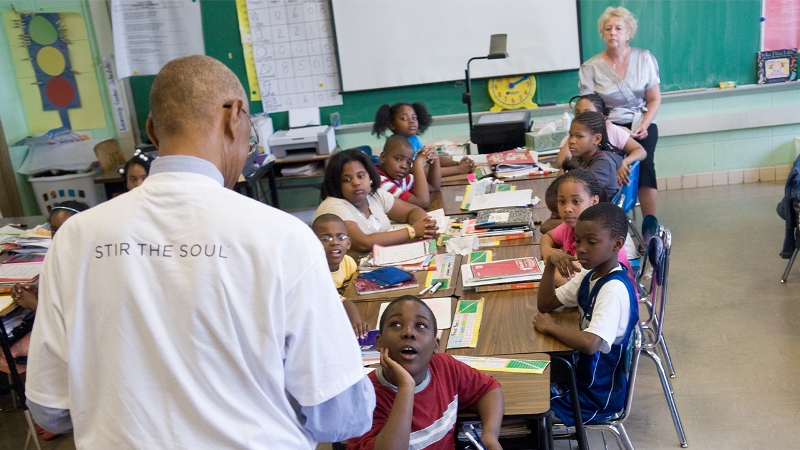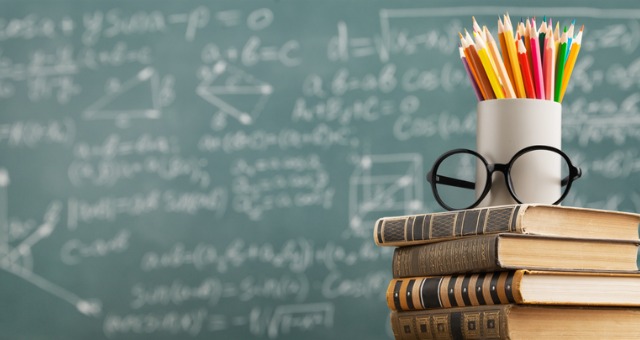Enroll in Primary Science Tuition Singapore for a Strong Science Foundation
Enroll in Primary Science Tuition Singapore for a Strong Science Foundation
Blog Article
Checking Out the Different Mentor Methods in Key Scientific Research Education And Learning Today
The landscape of primary scientific research education and learning is developing, with different mentor strategies acquiring importance in modern class. Inquiry-based understanding, hands-on experiments, and the integration of technology are redefining how instructors engage young minds. Additionally, joint techniques and differentiated instruction are being used to deal with the diverse requirements of students, boosting both interaction and understanding. As we take a look at these techniques, concerns arise regarding their performance and the ramifications for future educational techniques. What might these changes in strategy mean for the future generation of learners?
Inquiry-Based Learning
Inquiry-Based Understanding (IBL) is a pedagogical method that urges trainees to discover scientific principles with questioning, examination, and hands-on testing. This method stresses the function of trainees as energetic participants in their discovering, advertising vital thinking and analytical skills. By engaging with real-world questions, students end up being interested and motivated, which improves their understanding of clinical principles.
In IBL, instructors serve as facilitators, guiding students as they browse their inquiries rather than supplying details straight. This student-centered method enables differentiation, suiting different discovering styles and paces. Pupils establish abilities in creating hypotheses, developing experiments, and assessing information, which are crucial for scientific literacy.
In addition, IBL cultivates cooperation amongst trainees, urging them to share findings and concepts. This collective query advertises social skills and a sense of community within the class. Moreover, the procedure of query motivates strength, as students discover to accept failing as a stepping stone toward understanding.
Hands-On Experiments
Hands-on experiments are a vital part of efficient scientific research education, enhancing the concepts of inquiry-based knowing. These experiments allow pupils to involve straight with scientific ideas, promoting a deeper understanding with experiential understanding. By adjusting materials and observing results, young learners can comprehend abstract theories in tangible means.
Such tasks advertise important thinking and analytic skills, as pupils hypothesize outcomes, conduct experiments, and examine results. This process encourages them to ask inquiries, fine-tune their understanding, and create a scientific way of thinking. Hands-on experiments can be tailored to varied learning designs, making certain that all students have the chance to involve meaningfully with the content.
Additionally, hands-on experiments usually encourage cooperation amongst peers, advertising team effort and interaction skills. Working in groups makes it possible for students to share concepts, review searchings for, and find out from each other, which boosts their total educational experience.
Including hands-on experiments into the key scientific research curriculum not just enhances the learning environment however also grows a lifelong passion in science. By actively participating in their education, trainees are more probable to create an interest for scientific inquiry that expands beyond the classroom.

Technology Assimilation
Incorporating innovation into key science education and learning has come to be progressively important in cultivating pupil engagement and boosting finding out outcomes. The use of digital devices, such as interactive simulations, online laboratories, and educational software program, provides pupils with possibilities to explore clinical principles in ingenious methods. These sources assist in a much deeper understanding of complex subjects by permitting students to picture and control variables that would be unwise in a traditional class setting.
Furthermore, technology assimilation encourages customized finding more tips here out experiences. Students can progress at their very own rate, revisiting challenging principles via multimedia resources, which accommodate different discovering designs. This flexibility not just supports private development however also cultivates a feeling of freedom in students.
Additionally, innovation works as a bridge to real-world scientific research, connecting trainees with present research study and specialist payments. Access to clinical journals and on the internet databases widens trainees' viewpoints on scientific questions and cultivates vital believing abilities.
Collaborative Understanding
Collective understanding plays a crucial role in main science education and learning by cultivating team effort and interaction abilities amongst pupils. This strategy encourages learners to work with each other, share knowledge, and participate in problem-solving, which improves their understanding of scientific ideas. By getting involved in group activities, trainees discover to verbalize their ideas, pay attention to diverse viewpoints, and discuss options, all of which are necessary abilities in both scholastic and real-world contexts.

Research indicates that joint learning can cause enhanced inspiration and engagement in science subjects, as pupils locate satisfaction in shared experiences (primary science tuition Singapore). In addition, this strategy prepares students for future joint ventures, equipping them with the abilities essential for efficient team effort in college and specialist environments. Inevitably, welcoming joint discovering in key scientific research education can substantially enhance the discovering experience and advertise a much deeper understanding of scientific questions
Distinguished Guideline

Differentiated instruction can show up in different methods, such as varying the material, procedures, or items of discovering. As an example, educators might make use of tiered jobs that supply differing levels of intricacy, enabling students to operate at their particular preparedness levels. Furthermore, flexible organizing techniques can facilitate partnership amongst students with different capacities, fostering peer discovering.
Assessment plays a critical function in this method, as it notifies guideline and helps instructors comprehend each pupil's special demands. Formative analyses, such as tests and observations, can guide educators in changing their approaches to boost learning end results. primary science tuition Singapore. Ultimately, by carrying out separated guideline in key scientific research education and learning, teachers can grow a more reliable and fair learning environment, encouraging all trainees to reach their complete potential in recognizing clinical phenomena
Conclusion
In summary, the varied training methods in key science education and learning, consisting of inquiry-based knowing, hands-on experiments, innovation assimilation, joint knowing, and distinguished check that instruction, collectively add to a much more efficient discovering environment. These techniques promote crucial thinking, analytical skills, and a deeper comprehension of clinical concepts. By executing these strategies, teachers can create encouraging and interesting classrooms that attend to the varied demands of students, eventually cultivating a long-lasting rate of interest in science and boosting scholastic success.
Inquiry-Based Learning (IBL) is an instructional technique that encourages pupils to explore scientific principles through wondering about, examination, and hands-on testing.Joint knowing plays a crucial role in main scientific research education by fostering synergy and interaction abilities among trainees.Research study suggests that collaborative learning can lead to raised motivation and engagement in science subjects, as pupils locate satisfaction in shared experiences.In cultivating a comprehensive understanding environment, set apart direction emerges as an essential technique to fit the diverse demands and capacities of trainees in primary science education and learning. Inevitably, by applying set apart guideline in key science education, educators can cultivate a much more effective and fair knowing atmosphere, empowering all trainees to reach their full capacity in recognizing clinical phenomena.
Report this page